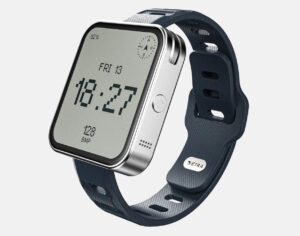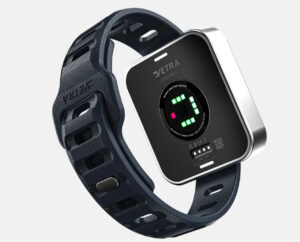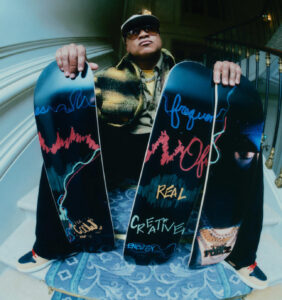
Designer: Vladimir Dubrovin
In an era defined by constant connectivity, we spend over half our waking hours staring into glowing rectangles—laptops, tablets, smartphones, even wearable devices. These screens, indispensable as they are, have become both windows to the world and barriers to our well-being. Dry eyes, restless nights, throbbing headaches—these symptoms are not minor inconveniences. They are profound signs of a fundamental misalignment between our technology and our biology.
Amid this growing unease, a quieter, gentler alternative has been building momentum beneath the mainstream frenzy: E-Ink. Once relegated to the narrow world of e-readers, this humble technology offers a different relationship with screens—one that favors biology, energy, and attention over sensory overload. As designer Vladimir Dubrovin envisions, the coming years could see E-Ink transform not only our gadgets, but the very texture of daily life.
The Paradox of Modern Screens
Today’s displays are undeniable marvels of engineering—brighter, faster, and sharper than anything imagined a generation ago. OLEDs render true blacks; LCDs glow vividly even under midday sun. Yet these achievements have come at a cost.
Behind every dazzling screen lies an assault on the human eye. High-intensity blue light, especially prevalent in LED and OLED screens, suppresses melatonin production, delaying sleep cycles and fragmenting rest. The hyperactive refresh rates—60Hz, 120Hz, even 240Hz—cause imperceptible yet constant pupil contractions, a microscopic choreography of fatigue repeated thousands of times per day. Over time, this “digital strain” depletes not just physical stamina but cognitive sharpness as well.
Ironically, the very brilliance we crave in our displays blinds us to their dangers. The human eye evolved for a world of diffuse natural light, not for radiating pixels blasting photons straight into retinal tissue. We were not built for endless days inside an artificial sun.
E-Ink flips this paradigm. Its displays work not by emitting light, but by reflecting ambient illumination—just like paper. It is a profound technological choice: gentle on the eyes, frugal with power, and more attuned to human rhythms.
The difference, once experienced, feels almost philosophical. Where traditional screens demand attention with their luminescence, E-Ink whispers with quiet presence.
The Three Transformative Powers of E-Ink
Biological Harmony
At its core, E-Ink aligns with human physiology rather than overpowering it. No backlighting, no blue light assault, no endless flickering refresh cycles. Reading on an E-Ink screen feels eerily similar to reading a printed page—natural, intuitive, fatigue-free.
More than a comfort, this is a health revolution in waiting. Studies suggest that reducing nighttime blue light exposure can restore sleep quality, boost mood regulation, and even enhance metabolic health. If traditional screens sabotage our circadian rhythms, E-Ink might just heal them.
Energy Elegance
Unlike LCDs or OLEDs, which require continuous energy to sustain an image, E-Ink only consumes power when the image changes. Once text or graphics are rendered, the display remains static, sipping no energy to maintain it.
The implications are staggering. A typical e-reader can function for weeks on a single charge. If applied at scale—phones, tablets, smart signage—the world’s energy consumption for displays could drop dramatically. Public transportation hubs, hospitals, even homes could benefit from this near-frictionless energy profile.
Cognitive Clarity
The E-Ink experience offers an unexpected bonus: a natural filter against distraction. Stripped of pop-up animations, color bombardments, and notification overload, E-Ink creates a reading environment that prioritizes focus. Studies suggest that reading comprehension improves markedly—sometimes by 15-20%—when visual distractions are minimized.
For a world choking on information, E-Ink offers not less data, but better absorption of it.
Breaking the Niche Barrier
Yet despite its manifold advantages, E-Ink has remained largely trapped in niche devices like Kindles, digital notepads, and specialty displays. The reasons are real—but not insurmountable.
The Speed Dilemma
Today’s E-Ink refreshes images slowly compared to LCDs or OLEDs. Traditional black-and-white E-Ink panels often refresh at just 1–15Hz—too sluggish for video, gaming, or real-time interactivity.
Yet innovation surges forward. Companies like Dasung have developed monitors capable of 25Hz refresh rates, enabling web browsing and even basic video playback. E-Ink’s own Rapid Refresh prototypes hint at a future where seamless scrolling, touchscreen responsiveness, and animated transitions become routine rather than rare.
The Color Challenge
Early E-Ink was limited to grayscale, suitable for text but dull for anything else. That’s changing quickly.
- Kaleido 3 technology, introduced in 2022, renders thousands of soft colors with impressive battery frugality.
- Gallery 3, unveiled in 2023, boasts full-color E-Ink capable of displaying 50,000 hues—while offering faster refresh rates suitable for dynamic content like magazine layouts and educational materials.
While not yet rivaling the glossy vibrance of OLED panels, E-Ink color is “good enough” for an array of real-world applications.
The Cost Equation
For years, manufacturing costs kept E-Ink expensive. Producing microcapsules, assembling layered matrices, and maintaining quality control made E-Ink 2–3 times more costly than mass-market LCDs.
However, this is changing too. Corporate adoption of E-Ink in supply chains—like Walmart’s price tags and Tokyo’s railway signs—is driving mass production, pushing down prices. At the same time, companies like BOOX are selling full-color E-Ink tablets at price points competitive with mid-range iPads.
As scaling effects take hold, E-Ink could soon break free from its luxury niche.
Vladimir Dubrovin’s Vision: Beyond the Book
Russian designer Vladimir Dubrovin dreams bigger. In his conceptual explorations, E-Ink is no longer just for reading or niche gadgets; it becomes the ambient skin of the modern world.
Adaptive Office Spaces
Imagine conference room walls entirely covered in E-Ink panels. With a tap or voice command, the room shifts from clean whiteboards to brainstorming sessions, displaying calendars, meeting notes, or inspirational quotes—then fading to neutral textures to restore calm. Unlike projectors or LED panels, E-Ink requires no harsh lighting, no constant buzzing fans, and minimal energy draw.
Fashion-Forward Functionality
Dubrovin also envisions garments embedded with flexible E-Ink patches—wearable interfaces that display maps, notifications, or artistic designs. A jacket sleeve could become a navigation tool while cycling, or a dynamic badge at social events.
By pairing E-Ink with piezoelectric fabrics (which generate electricity through motion), such wearables could remain self-powered, lightweight, and endlessly customizable.
Context-Aware Devices
Finally, Dubrovin imagines a new generation of context-sensitive gadgets:
Phones that automatically switch into E-Ink mode for emails or e-books, conserving battery and soothing the eyes; tablets that morph between vibrant OLED mode for movies and calming E-Ink mode for deep work.
Rather than choosing between vibrance and wellness, users would fluidly inhabit both worlds.
The Road Ahead: E-Ink’s Evolutionary Stages
If Vladimir Dubrovin’s vision comes to life, the E-Ink revolution will unfold across three phases:
Phase 1 (2024–2026): Hybrid Devices
- Smartphones with secondary E-Ink displays for notifications and widgets
- Laptop keyboard decks using E-Ink to offer customizable shortcuts, visual macros, or adaptive layouts
Phase 2 (2027–2030): Mainstream Adoption
- Full-color E-Ink tablets with responsive touchscreens rivaling LCDs in casual use
- Urban infrastructure adopting passive E-Ink signage—weather-proof, glare-free, and readable in sunlight
Phase 3 (2030+): Ubiquitous Integration
- Automotive dashboards combining OLED entertainment with E-Ink instrument clusters
- Dynamic braille readers for the visually impaired, using shape-shifting E-Ink surfaces
- Smart homes where wall panels morph from decorative art to functional displays with zero energy footprint
A Manifesto for Mindful Technology
The gentle revolution E-Ink proposes is not anti-technology. It is pro-human.
Just as the world now acknowledges that energy sources must vary (solar, wind, gas) depending on context, so too must our information surfaces. Brilliance has its place; so does gentleness.
We do not need every screen to be a blazing arena of color and animation. We need spaces where attention, energy, and biology come first.
Workspaces where focus matters more than flash. Public spaces where accessibility and sustainability outshine spectacle. Personal spaces where serenity reclaims its rightful place.
Vladimir Dubrovin’s vision dares to ask: What if the future of screens isn’t louder, faster, brighter—but softer, calmer, kinder?
The most revolutionary display of the 21st century might be the one that finally learns when to disappear.
In a world craving authenticity and overwhelmed by digital noise, E-Ink stands as a quiet promise: a technology designed not just to dazzle the eye, but to honor the human behind it.
No comments yet.









